thunderheart
100 W
Original article: https://www.thunderheartreviews.com/2019/02/Samsung-33j-21700-Li-ion-battery-for-Tesla.html
Samsung INR21700-33J is neither a high drain nor a high capacity cell but it's a very interesting battery thanks to its impressive cycle life. It's designed for Tesla and is ideal for using in big battery packs.
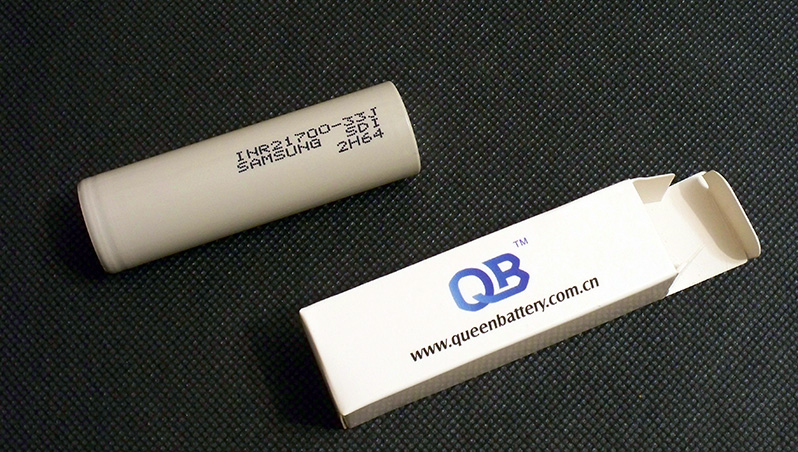
The battery was bought from my reliable supplier (Queen Battery) and tested with ZKETECH EBC-A20 and a self-made battery holder. It's a PC-connected battery tester supporting 4-wire measuring and discharging at up to 20A.
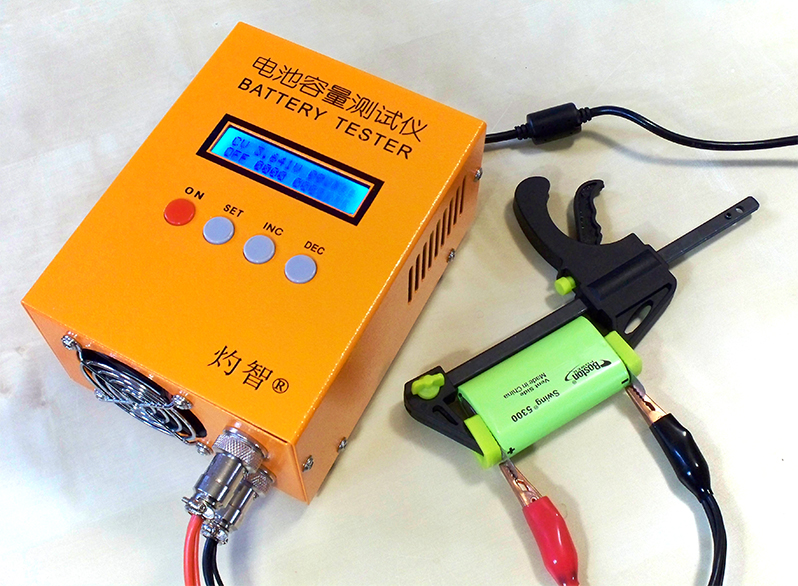
I've used version 3.0 of my battery holder based on 0.5mm thick pure copper terminals
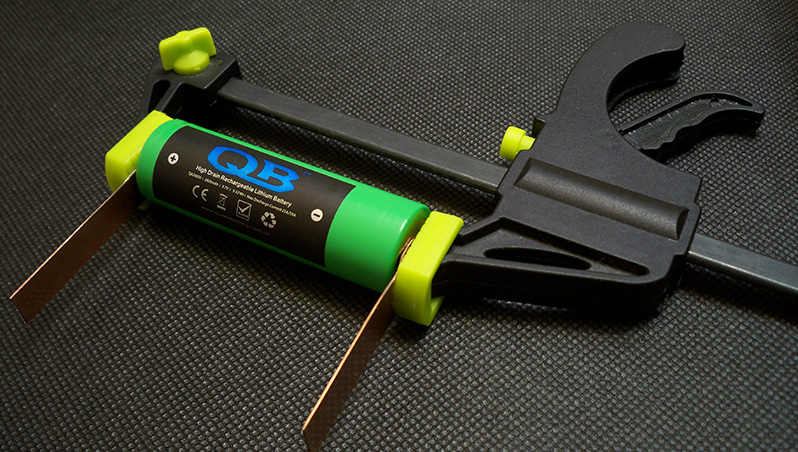
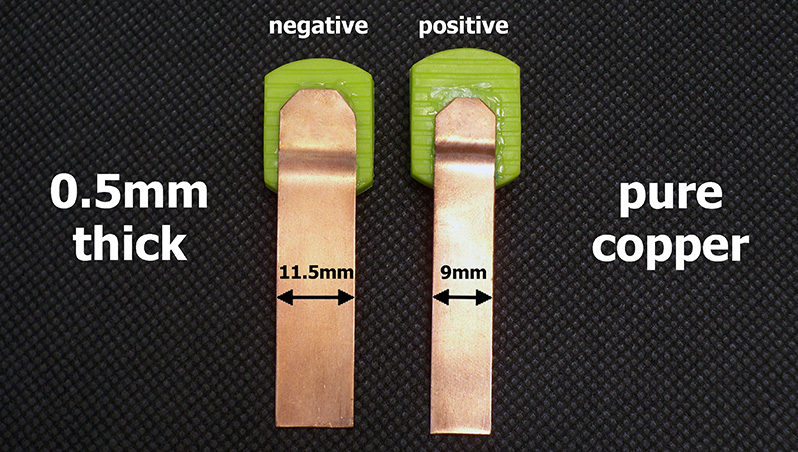
I've followed all the prescriptions of the IEC61960-2003 standard concerning battery's capacity measurement. Before each discharging cycle each battery was charged at standard charge current mentioned in its datasheet to charge end voltage. Before each discharging or charging i've held a 1-1.5hrs pause. The environment temperature was 23.0-24.5°C. To be sure in results i've done each test minimum twice (usually 3-4 times).
Samsung INR21700-33J
The cell is marked as INR21700-33J SAMSUNG SDI 2H64. The H64 means it was produced on June 04 2017.
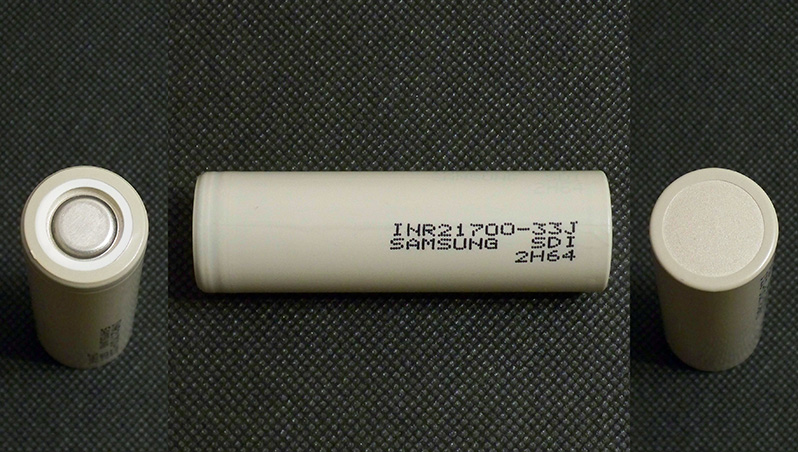
The main specs from Samsung 33J datasheet:
Typical capacity: 3270mAh
Typical energy: 12.0Wh
Minimum energy: 11.4Wh
Standard charge current: 1.6A (0.5C)
Maximum charge current: 3.2A (1C)
Charge cut-off current: 64mA (0.02C)
Charge end voltage: 4.20V
Recommended charge end voltage: 4.10V / 160mA cut-off
Max. continuous discharge current: 6.4A (2C)
Discharge cut-off voltage: 3.0V
AC impedance at 1KHz: 29±5mΩ
Weight: 62±1.5g
The manufacturer recommends charging this battery only up to 4.1V. In that case the cycle life of the battery gonna be about 2000 cycles while keeping more than 75% of it's capacity. Don't forget that this cell is designed for Tesla.
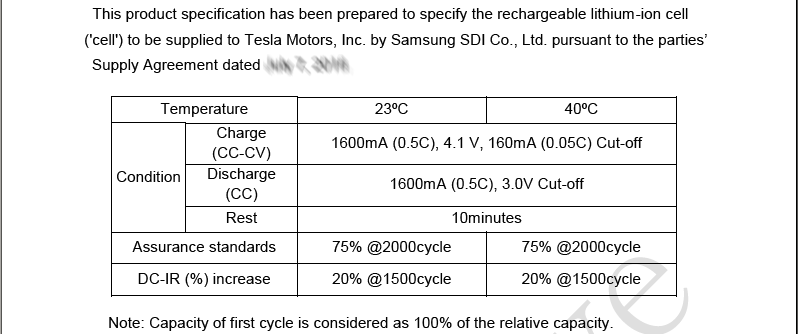
Measured DC IR at 3.2A in fully charged condition was 34±1.5mΩ
Measured weight of the tested cell was 62.81g
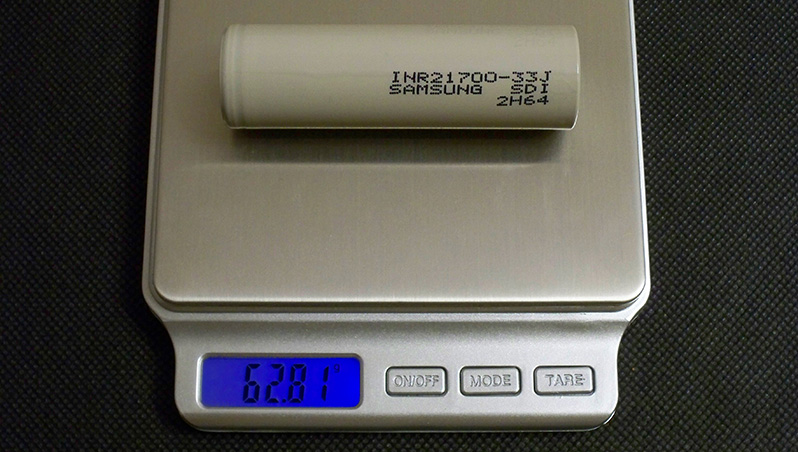
Capacity test results:
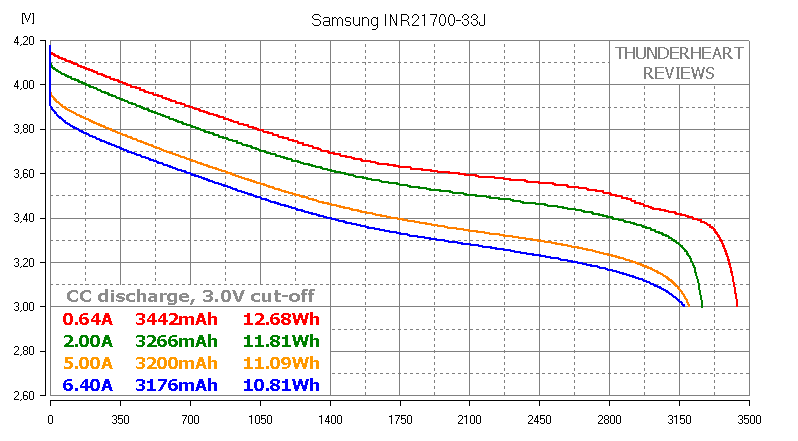
At 0.2C (0.64A) 33J's capacity is noticeably more than the declared 3270mAh and the energy more than 12.0Wh. At 5A the capacity is 3200mAh and the energy - 11.09Wh. I would not recomment to discharge this cell at more than 5A because this is a low drain cell. Also pay attention to the discharge cut-off voltage - it's 3.0V vs 2.5 we usually see in Li-ion cells' datasheets.
Samsung 33J doesn't impress with its capacity or max discharge rate but it's enormous (for Li-ion) cycle life makes it an interesting cell for a wide range of applications where long life is critical.
Here is the video version of this review:
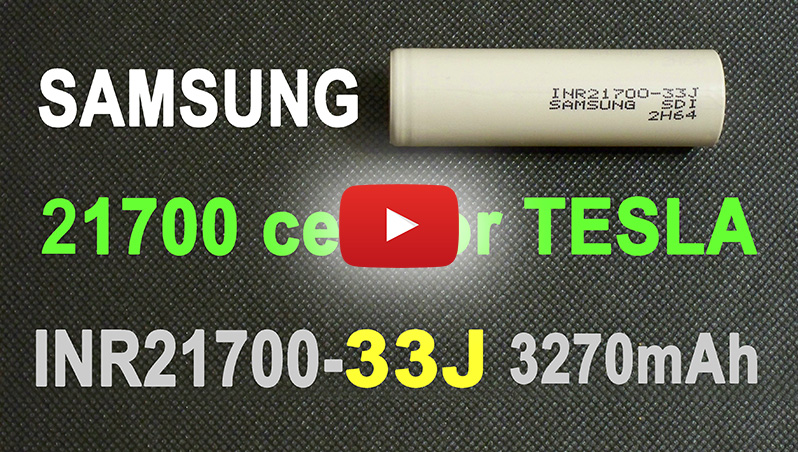
Check out my YouTube channel for batteries, chargers and other stuff reviews.
I've launched my blog where you can find all my reviews in one place. Every new test/review will be first published on YouTube and in the blog. I'll be happy to see new subscribers, comments, suggestions and just your thoughts.
Samsung INR21700-33J is neither a high drain nor a high capacity cell but it's a very interesting battery thanks to its impressive cycle life. It's designed for Tesla and is ideal for using in big battery packs.

The battery was bought from my reliable supplier (Queen Battery) and tested with ZKETECH EBC-A20 and a self-made battery holder. It's a PC-connected battery tester supporting 4-wire measuring and discharging at up to 20A.

I've used version 3.0 of my battery holder based on 0.5mm thick pure copper terminals


I've followed all the prescriptions of the IEC61960-2003 standard concerning battery's capacity measurement. Before each discharging cycle each battery was charged at standard charge current mentioned in its datasheet to charge end voltage. Before each discharging or charging i've held a 1-1.5hrs pause. The environment temperature was 23.0-24.5°C. To be sure in results i've done each test minimum twice (usually 3-4 times).
Samsung INR21700-33J
The cell is marked as INR21700-33J SAMSUNG SDI 2H64. The H64 means it was produced on June 04 2017.

The main specs from Samsung 33J datasheet:
Typical capacity: 3270mAh
Typical energy: 12.0Wh
Minimum energy: 11.4Wh
Standard charge current: 1.6A (0.5C)
Maximum charge current: 3.2A (1C)
Charge cut-off current: 64mA (0.02C)
Charge end voltage: 4.20V
Recommended charge end voltage: 4.10V / 160mA cut-off
Max. continuous discharge current: 6.4A (2C)
Discharge cut-off voltage: 3.0V
AC impedance at 1KHz: 29±5mΩ
Weight: 62±1.5g
The manufacturer recommends charging this battery only up to 4.1V. In that case the cycle life of the battery gonna be about 2000 cycles while keeping more than 75% of it's capacity. Don't forget that this cell is designed for Tesla.

Measured DC IR at 3.2A in fully charged condition was 34±1.5mΩ
Measured weight of the tested cell was 62.81g

Capacity test results:

At 0.2C (0.64A) 33J's capacity is noticeably more than the declared 3270mAh and the energy more than 12.0Wh. At 5A the capacity is 3200mAh and the energy - 11.09Wh. I would not recomment to discharge this cell at more than 5A because this is a low drain cell. Also pay attention to the discharge cut-off voltage - it's 3.0V vs 2.5 we usually see in Li-ion cells' datasheets.
Samsung 33J doesn't impress with its capacity or max discharge rate but it's enormous (for Li-ion) cycle life makes it an interesting cell for a wide range of applications where long life is critical.
Here is the video version of this review:

Check out my YouTube channel for batteries, chargers and other stuff reviews.
I've launched my blog where you can find all my reviews in one place. Every new test/review will be first published on YouTube and in the blog. I'll be happy to see new subscribers, comments, suggestions and just your thoughts.

